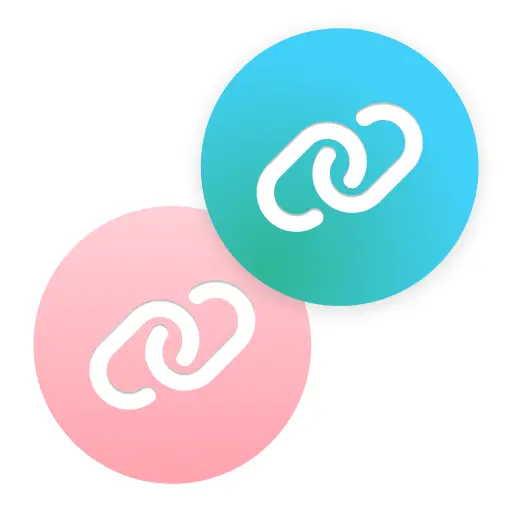
Beware! Considerations and Consequences of Changing Established URLs
Published May 12, 2025
We welcome James King to Sitebulb today who walks us through the potential consequences of changing URLs and what to consider before doing so.
In this article, we will look at the considerations and consequences of changing established URLs, make you aware of the risks involved and look to minimise these issues before they become blazes that need putting out.
Contents:
- Why changing the URL structure is a big deal to the search engines
- Why search engines don’t like change in the URLs
- Option one: Keep the current URL as it is
- Option two: Apply a 301 redirect pointing to the new location
- Option three: Change the URL without applying any redirects
- Summary
Why changing a URL structure is a big deal to the search engines
Picture a scene, you’re working in an SEO agency and servicing multiple clients. Delivering excellent work and providing quality results on your client’s campaigns. The monthly reports are showing consistent Year-on-Year organic growth. The client feedback is positive as the organic business growth is leading to more sales enquiries. Things are going great. You’re pleased that your SEO efforts are contributing to the success of your client’s campaigns, and they are pleased to be working with you. Then, out of nowhere, you receive an urgent message in your inbox.
After reading the email, you learn that your client’s organic traffic has tanked. The client is on the phone panicking. You can tell that the client is stressed, as other decision makers in the business are wanting answers and they want them now. As an SEO, everyone is pointing to you for answers, and they want to understand why their visibility in the search engines has dropped.
After some further investigation, you discover that the client has had a new website design, the URL structure has changed, no redirects were considered, and the website went live two days ago without you being involved in the project. If only you were informed of this project change beforehand, you could have intervened and prevented this issue from happening.
Editor’s Note: You’re going to want to read and share this article with your clients: Why SEO Must be Involved from Day 1 in Site Migrations
Throughout my career, expanding over 16 years, I’ve worked on multiple SEO campaigns where the website was created and maintained by a different agency. Only then to learn that major changes were made to the site after they’ve gone live.
The above scenario is quite common in the digital world. Leading to hours of time unpicking the damage that has already been done.
It’s critical not to underestimate the importance of URL changes. Although to us as humans, one character change in the URL doesn’t look that important. To search engines, one character difference makes all the difference.
If you change the web address from https://www. to https:// or the change the site from a trailing slash to a non-trailing slash, these subtle changes can have drastic consequences for the search engines. Unfortunately, not all webmasters are aware of the detrimental impacts these changes can have.
Why search engines don’t like change in the URLs
As Google’s John Mueller has highlighted: “In particular, search engines like Google store their index on a per-page basis. So if you change the address or the URL of a page, that page’s data has to be forwarded somehow. Otherwise, it gets lost. It doesn’t matter if you’re completely rebuilding a website or if you’re just removing a slash from the end of URLs, these are all essentially site moves.”
In summary, Google uses the URL of a page as a unique identifier. In this scenario, there are three options available:
1) Keep the current URL as it is
2) Apply a 301 redirect pointing to the new location
3) Change the URL without applying any redirects
Option one: Keep the current URL as it is
If possible, this would be the most favourable option and here’s why:
A well-established URL is currently within the search engine index. John Mueller at Google has mentioned that: “I'd really recommend keeping the same URLs for the long run.”
As the URL is the unique identifier for each page, the long term benefits include:
1. Preserves link equity
If you’ve created an article on your site that has an abundance of high quality links, it’s important to maintain those inbound links to that page. By keeping your URL the same, you are not going to dilute your link building efforts.
Depending who you ask in the SEO world, there are varied responses on how much link equity can be lost through 301 redirects.
That said, the Google Search Central Document states that: “External links: Try to contact the sites in the saved list of sites linking to your current content, asking them to update their links to your new site. Consider prioritising your efforts by the number of inbound visits for each link.”

2. Preserves the performance of your most profitable search terms and URLs
When looking to change a URL structure, it’s also important to assess which search terms are your most successful, that drive the most traffic and lead to the most enquiries.
Let’s use the example, “used cars for sale”; this is a tough keyword to rank for and has an average UK search monthly volume of 49,500.
Let’s say that you’re a “second hand car dealership” that has a UK wide presence and has been focusing your SEO efforts on “used cars for sale” as a long-term SEO objective for the past 3 to 5 years. As a business, you’re getting closer towards page one of Google.
Think about all the investment you’ve made into the site. You appreciate that SEO is a long-term marketing objective. In this example, if you’re in a highly competitive niche, it’s very wise to keep your best ranking and converting URLs the same, to prevent losing any hard work and rapport you’ve established with the search engines.
By looking at the top 10 listings for “used cars for sale” below, we can see that the competition is strong—as we’re up against sites such as autotrader.co.uk (Moz Domain Authority of 77) and evanshalshaw.com (Moz Domain Authority of 56) and motors.co.uk (Moz Domain Authority of 56). If you’re climbing higher in the search engines for a competitive term, it makes logical sense not to change the URL for that high performing keyword.

By changing the URL structure of your best performing URLs, you run the risk of taking a step back in the search engine listings and undoing all that hard work and effort.
3. Improved SEO
By keeping your URL the same, this will help to maintain your search engine rankings. If you have some pages that are ranking high in Google for highly competitive keywords and are generating revenue, why would you want to risk losing visibility for your most profitable search terms?
4. Reduces technical implementations
If you decide to change a URL, you need to do 301 redirects, then you need to fix your internal link building and update the external URLs. This alone could become a mammoth task adding hours of extra unnecessary work.
Equally, if you’re emailing webmasters to update external links, the success rate can be fairly low. According to an article by Ahrefs, the average link outreach success rate can range from 1% to 5%.
To summarise, by keeping your URL structure the same, this will save a lot of time and prevent any fluctuations in the search rankings. Bear in mind that the search engines need to re-learn the URL infrastructure of your site. The time it takes for search engines to recrawl your site, and all external links, will vary greatly due to the number of pages your website has.
Option two: Apply a 301 redirect to the new location
In some instances, keeping the URL structure the same is not an option—for example, if you’re rebranding your business, or due to legal implications.
If you do change your URL structure, it’s essential to have all your redirects planned out well before the new site goes live. This will save a lot of headaches prior to a site launch.
Keyword & URL Mapping
When it comes to redirects there is always an element of risk involved. It’s highly recommended to create a keyword and URL mapping spreadsheet. You can track all your most important keywords and the ranking URLs. Then you can decide which keywords, if necessary, can be pointed to a new redirected page.
Below is an example of a keyword research & mapping document for a made up company called: mycarcompany.co.uk.
In this example, we can see URL suggestions on where to map certain URLs.You can see the term “Toyota used cars” at the bottom of the table, this has a ranking position of 18. When laying out all your URLs and keywords in this fashion, you can determine which pages have the potential for growth.

Equally, by planning out a URL mapping and keyword document, you have a blueprint for redirects in the future.
Considerations with redirects
Just like when driving down the road and discovering roadwork diversions, a redirect forces you to take a detour. Depending on the duration of the detour, this slows us down from us getting to our direct location.
When the search engines crawl our website, redirects are the search equivalent to roadwork diversions. Search engines need to understand these redirects, which takes time, and can result in a fluctuation of keyword rankings.
Positive impacts of using 301 redirects
Can help to preserve SEO value
When 301 redirects are applied, this can help to reduce the loss of SEO value by pointing a now non-existent page to a new location.
However, it takes time for the search engines to acknowledge and implement these redirects. Depending on the size of the site, it can take months to crawl all the pages and external links that are now forced to go through a 301 redirect.
301 redirects prevent 404 Errors
Nobody likes a 404 error and especially the search engines. To prevent Google deindexing 404 pages from its index, it’s highly advised to have 301 redirects in place for relevant pages.
Not so positive impacts of 301 redirects
Reduction in link equity
If you decide to implement a 301 redirect to a URL that has an abundance of links both internally and externally, all those URLs need to go through the redirect. As a result, by not going through the direct URL, we are diluting our link building efforts. By going from point A to point B to point C, you are not getting 100% link equity.
You want to try and maintain as much SEO value as possible.If you decided to go on a quest to manually repoint all the external URLs to the correct end location, not only would it be costly in time and resources, but results could be underwhelming.
Option three: Change the URL without applying any redirects
If you don’t have any 301 redirects on your website after changing your URL structure, the search engines will see these pages as lost URLs (404 error pages).
It's wise to check any 404 URLs to see if there was any organic traffic pointing to those pages or any links pointing to those URLs. If there aren't any links or traffic pointing to those URLs, it’s fine for the URLs to serve a 404 error as John Mueller suggests in this Google Search Central video.If your website has a lot of relevant search traffic and any high traffic pages were deleted, these pages will be lost. One of the most common issues with site migrations is not considering redirects. The results for not using redirects can be catastrophic. Therefore, it’s highly advisable to do your due diligence first before deleting any URLs.
A 404 page should be displayed if the page has been genuinely deleted and doesn’t serve a purpose on your site. When implementing 301 redirects you want to make sure that the new destination has similar content to the previous version of that page.
We all know that a 404 error page is frustrating. If you do have relevant URLs that can be redirected to another destination, make sure that redirects are planned before going live with the site changes.
Summary
Changing URLs can be risky. For any website and in particular a business that makes a large amount of money online. It’s important to have a strict process in place to mitigate and reduce any potential risks ahead of time.When considering redesigning an existing website, it’s advisable to keep the existing URL structure the same as much as possible, if you can.
If there’s no need to change the URL structure, you’ll save time on creating 301 redirects and updating internal and external links. When there’s major changes to the URL structure, the search engines need time to absorb and acknowledge these updates. There’s no definitive answer to how long it will take for Google to absorb all the internal and external resources pointing to your site.
Depending on the size of your current site, the number of hours that can be potentially saved with a bit of planning can vary greatly. One of the best ways, if possible, to reduce turbulence in the search engines ranking is to keep the URL structure the same. When discussing site changes about the URL structure of a website with a client, it’s essential that website owners and business owners are fully aware and appreciate that URL changes are not instantly recognised and accepted by Google.
You might also like:

James King is the SEO Manager at Koozai, with over 16 years of SEO and digital marketing experience. He has worked both in-house and in multiple agencies, gaining experience from a wide range of industries and has collaborated with clients all over the world.
Articles for every stage in your SEO journey. Jump on board.
Related Articles
 Advanced SEO Guide to Rendering: How to Debug, Test & Control What Google Sees
Advanced SEO Guide to Rendering: How to Debug, Test & Control What Google Sees
 JavaScript SEO Fundamentals: Guide to Web Rendering Techniques
JavaScript SEO Fundamentals: Guide to Web Rendering Techniques
 Speed-to-Meaning: Technical & Measurement Blueprint for AI Search
Speed-to-Meaning: Technical & Measurement Blueprint for AI Search
 Sitebulb Desktop
Sitebulb Desktop
Find, fix and communicate technical issues with easy visuals, in-depth insights, & prioritized recommendations across 300+ SEO issues.
- Ideal for SEO professionals, consultants & marketing agencies.
Try our fully featured 14 day trial. No credit card required.
Try Sitebulb for free Sitebulb Cloud
Sitebulb Cloud
Get all the capability of Sitebulb Desktop, accessible via your web browser. Crawl at scale without project, crawl credit, or machine limits.
- Perfect for collaboration, remote teams & extreme scale.
If you’re using another cloud crawler, you will definitely save money with Sitebulb.
Explore Sitebulb Cloud
 James King
James King


